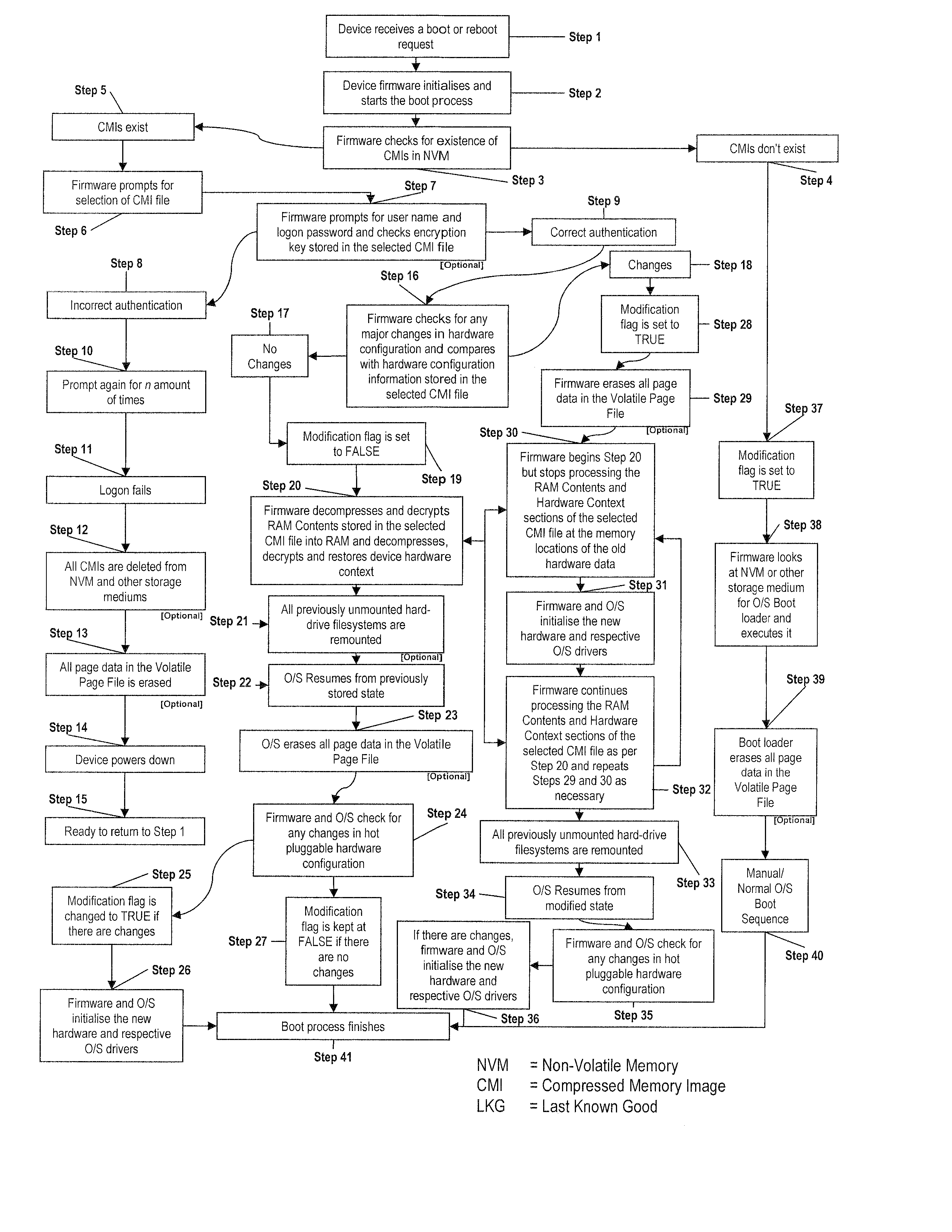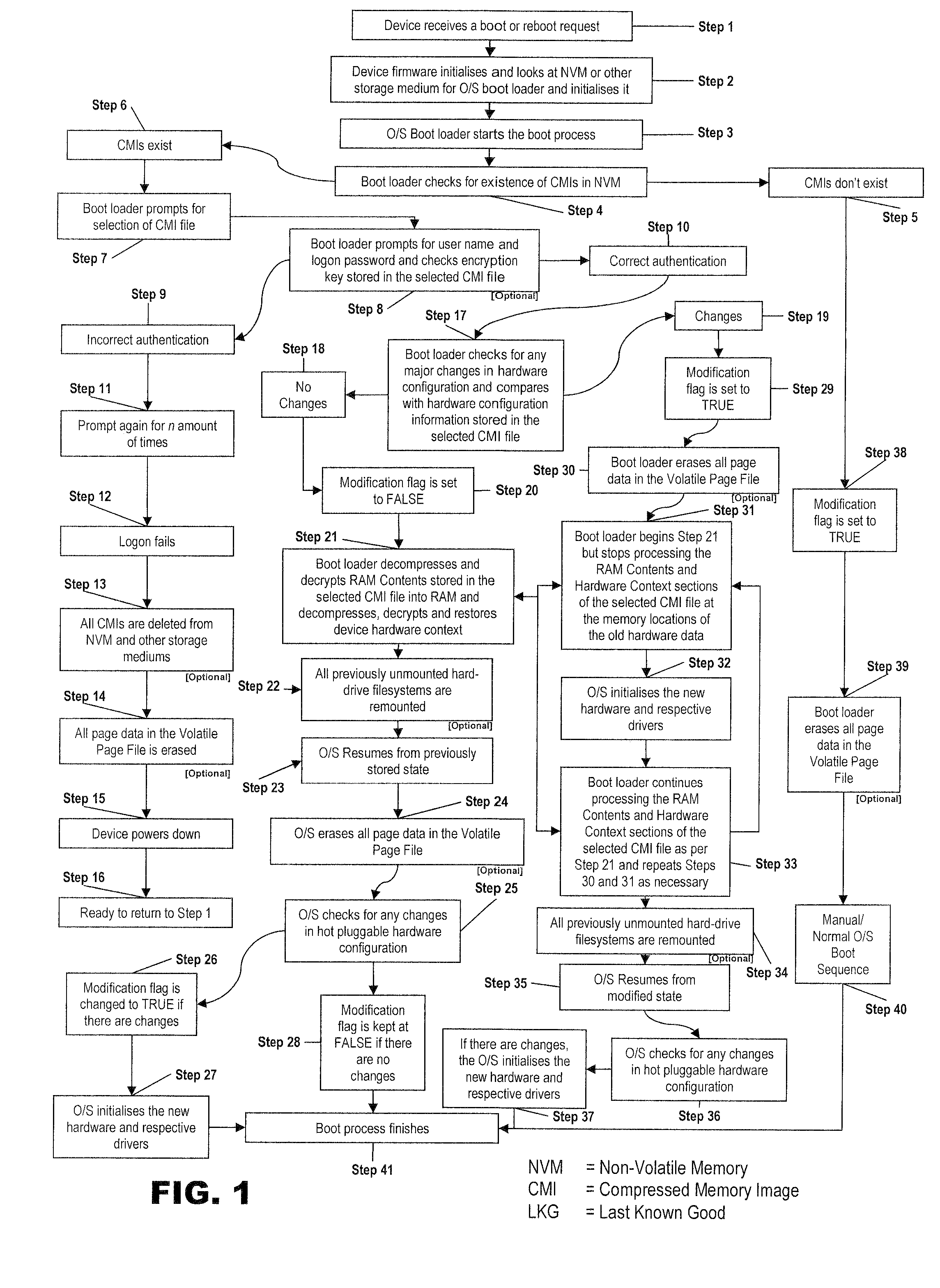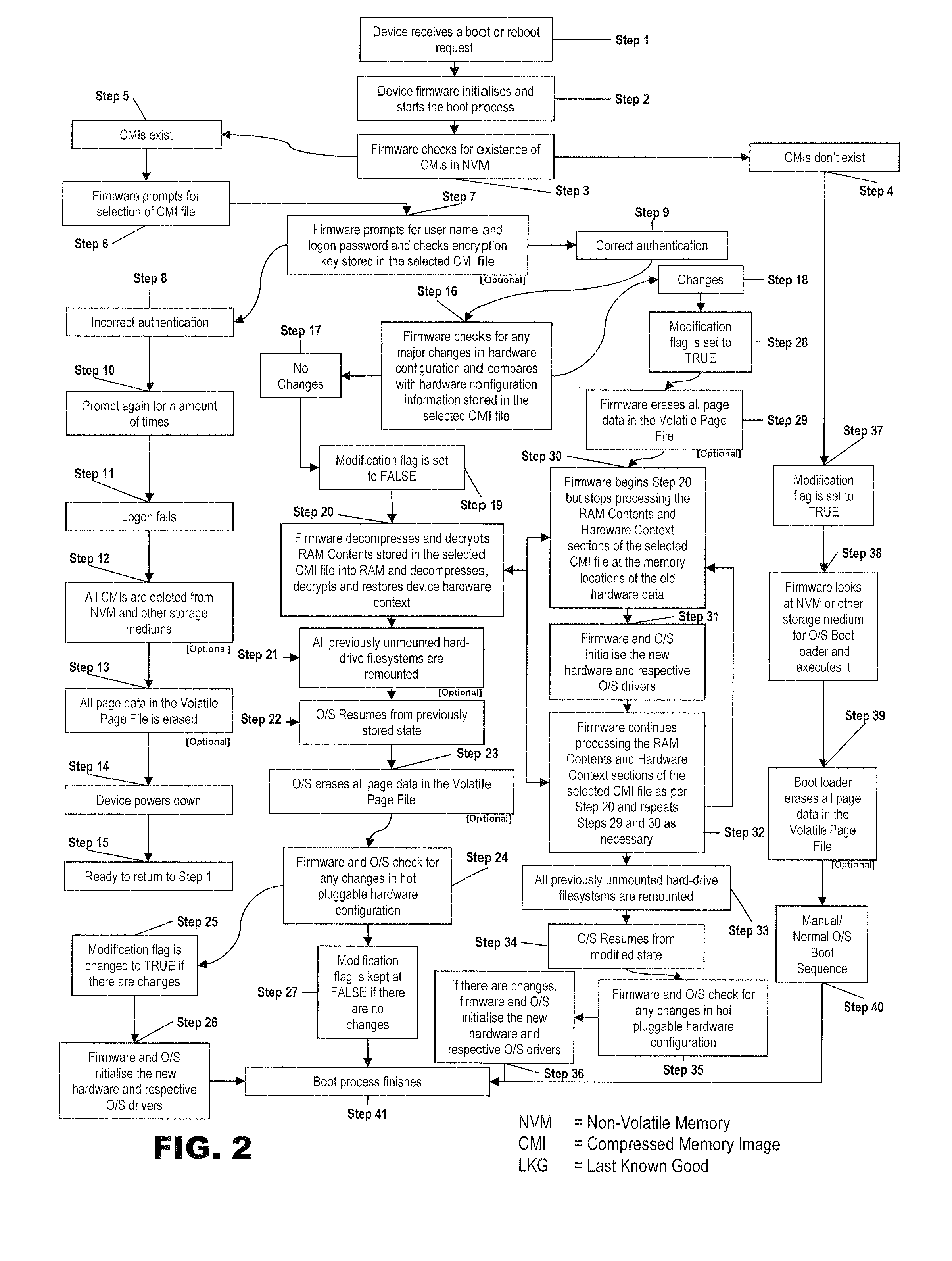Method and apparatus for shutting down a computer system
- Summary
- Abstract
- Description
- Claims
- Application Information
AI Technical Summary
Benefits of technology
Problems solved by technology
Method used
Image
Examples
Embodiment Construction
[0051] The examples referred to below relate to use of the invention to shut down or boot a personal computer and to a personal computer having a non-volatile reprogrammable memory configured to effect booting the computer. However, the invention is also applicable to other digital processing devices which require an operating system to be loaded for use, for example computer game machines, business machines and telecommunication apparatus.
[0052] Referring to FIG. 1, a flow diagram of a boot or start up process for a computer system according to the invention is illustrated.
[0053] The method described with reference to FIG. 1 assumes that a “cold” or “hard” boot is being performed. Those skilled in the art will see that the method is also applicable to situations where a “warm” or “soft” boot is performed.
[0054] Referring to FIG. 1, a user activates the system power button for example in step 1. This applies power to the system and, in the usual way; the firmware software initiat...
PUM
 Login to View More
Login to View More Abstract
Description
Claims
Application Information
 Login to View More
Login to View More - R&D
- Intellectual Property
- Life Sciences
- Materials
- Tech Scout
- Unparalleled Data Quality
- Higher Quality Content
- 60% Fewer Hallucinations
Browse by: Latest US Patents, China's latest patents, Technical Efficacy Thesaurus, Application Domain, Technology Topic, Popular Technical Reports.
© 2025 PatSnap. All rights reserved.Legal|Privacy policy|Modern Slavery Act Transparency Statement|Sitemap|About US| Contact US: help@patsnap.com



